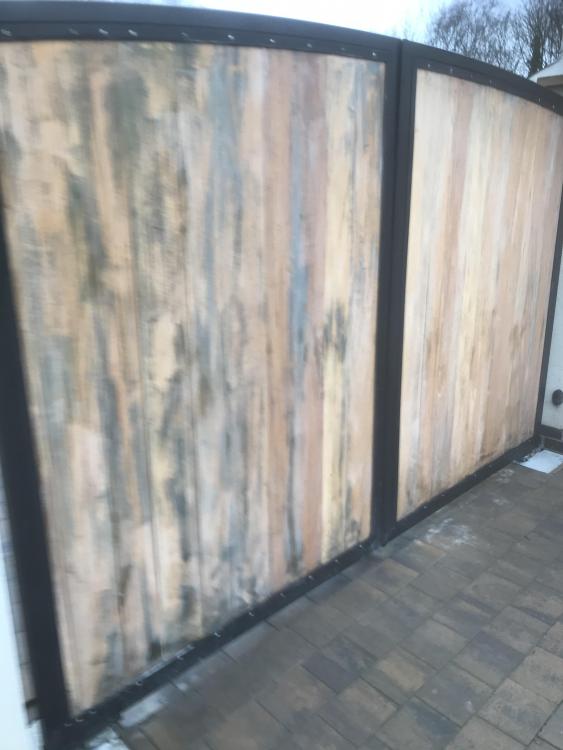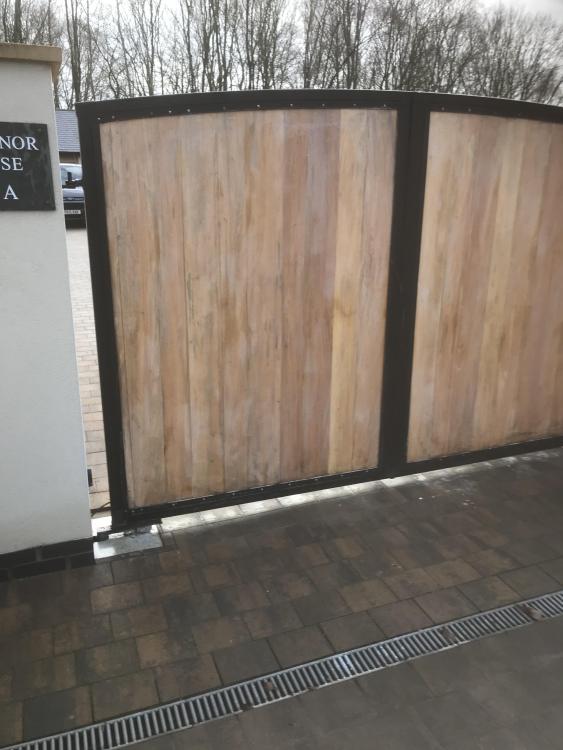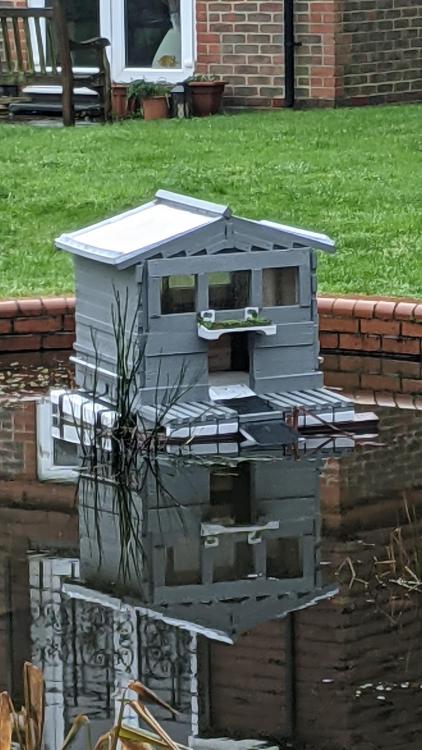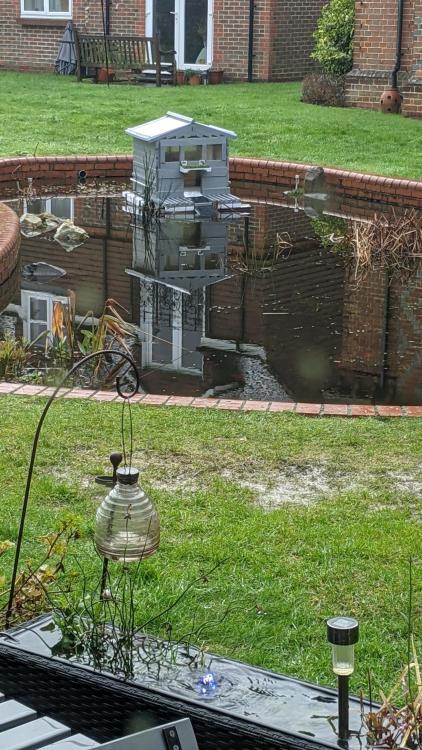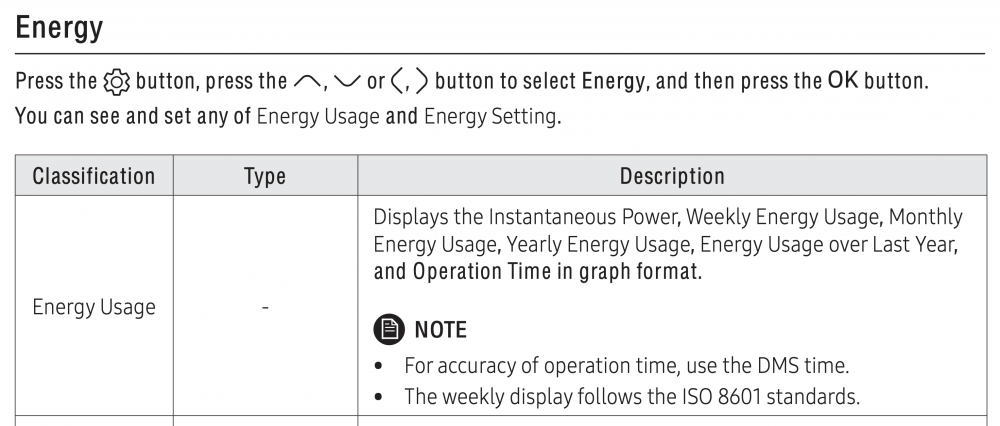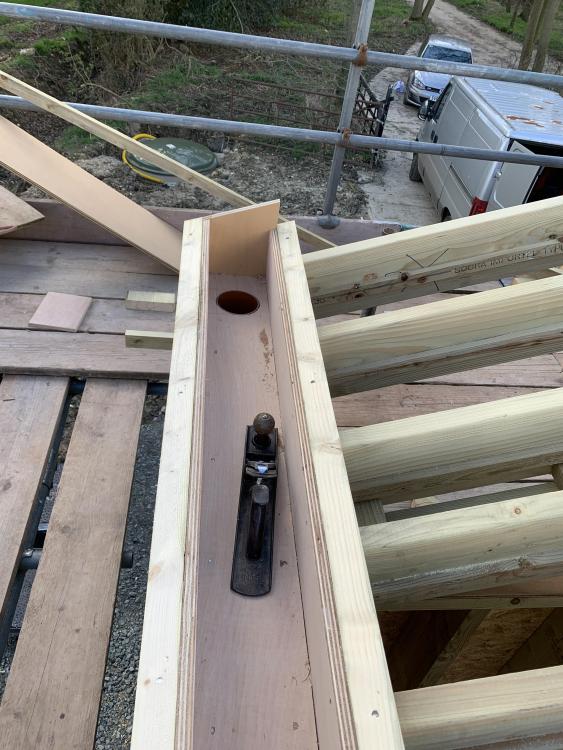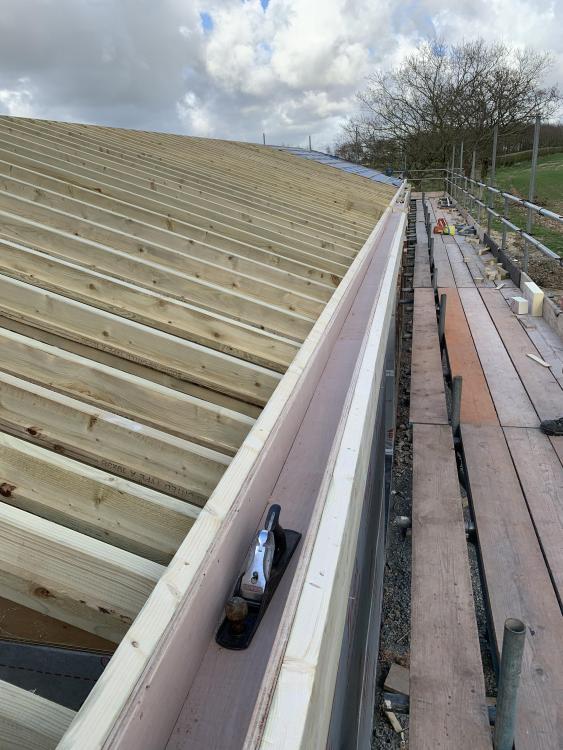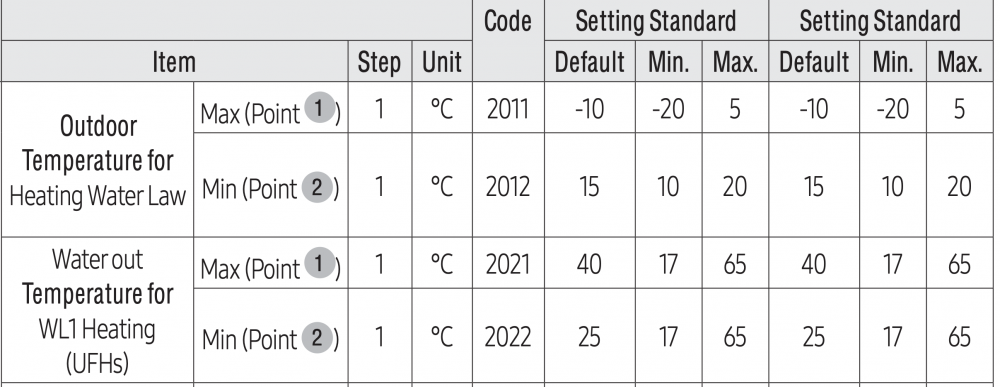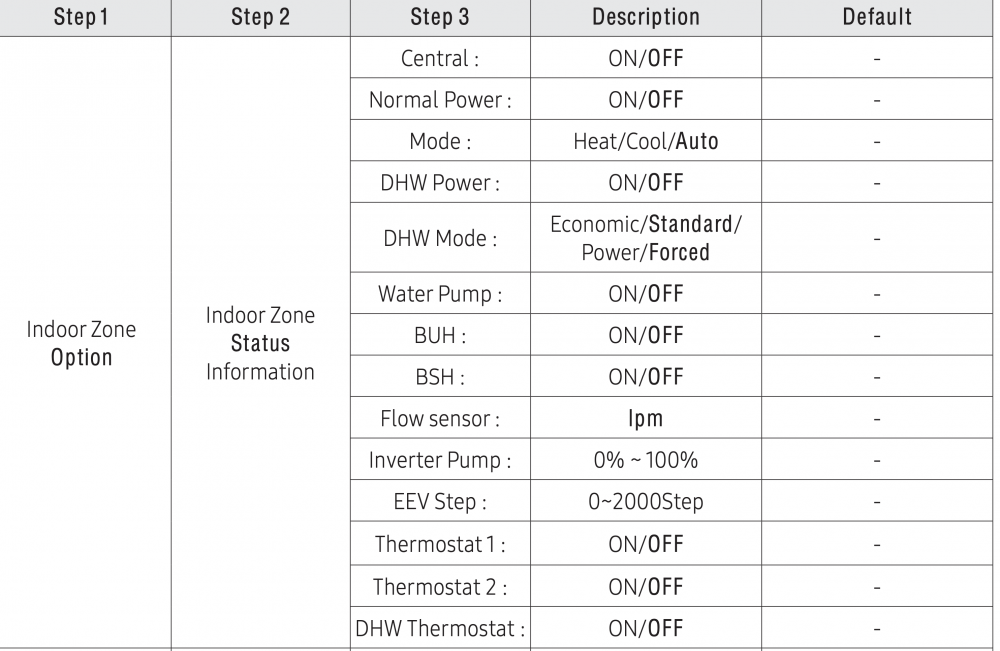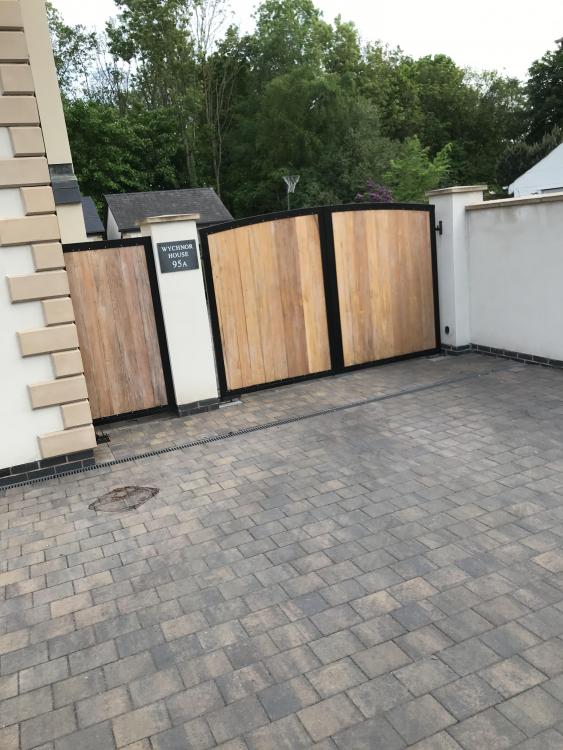Leaderboard
Popular Content
Showing content with the highest reputation on 01/16/21 in all areas
-
3 points
-
I'd like to say thanks to all of you who continue to contribute to this thread. Now retired, I have many years experience of running online programs in professional contexts. This thread offers challenges which would cause many to disengage. I'm inspired by the extended kindness and generosity shown here. BH is a good place to be .3 points
-
Hello all. A few thoughts. Before you start changing levels, methods of hanging joists, packing things etc it is really important to get a handle on the basics. Take a simple beam subject to vertical load. Often to perform it has to be kept vertical, not twist, or move sideways. We call this lateral and torsional restraint. Quite easily, if you muck up the restraints you can reduce the capacity of a beam / wall so much so that it will fail, sometimes even before the building is erected. I have seen this happen. Often a beam is designed where say floor joists are framing in above and provide this "lateral restraint". There are general rules that say for example that a mid floor joist can provide lateral restraint to a lintel or beam. But if you start to introduce packers and so on it raises some questions as you can introduce an extra slip plane, the assumed friction can be lost, thus the effective restraint is lost and this is not safe. I have quoted mvincentd.. it's a good photo. mv.. mentions a green roof.. which is heavy, hence probably the heavy twin engineered joists. Here you can see double joists framing in on the inner leaf of the lintel. The lintel is a cold formed steel lintel, say by "Catnic" or "Key Stone". For all. Please bear in mind the following: Catnic for example quote the capacity of their lintels base on a uniformly distributed load. That means that roughly the load is applied fairly evenly along the length of the lintel. Just as importantly they also specify what is called a load ratio. To allow the lintel to meet the stated capacity both the inner and outer flange loads have to fall within certain limits. In other words you can't put all the load on the inner flange and expect to get away with it as the lintel starts to twist too much. Having a cursory glance at the photo it seems that we have two double joists on the inner flange and very little load on the outer flange. All is not lost however if you want to go off piste and the load ratio is exceeded. You can contact the manufacture and ask them to check that what you propose is ok. The overall load may be less, while the load ratio may exceed the brochure limits they can check it will still be adequate. Please be aware of the consequences when changing the support details. Remember that the engineered joist manufacturer will often take no responsibility for anything other than their product.. be careful what you do. It's also worth thinking about how the lintel is supported at the ends. You can see from the photo that the double joists are more towards one side, thus the load at the right hand support will be more than the left. A consequence of this is that the lintel is subject to more of a shearing force at one end than the other. So again, it's worth checking this with the manufacturer. If you have an uneven load on the supports which the photo shows this is a flag for any checker. It's an aside, but you can see the wavy scratch marks on the block. Often folk think this is to provide a key for the plaster, but it also identifies the manufacturer of the block and the block strength. mv's photo is great. You can see the clear wavy marks, looks like there are four per block and the wave has a "defined shape". Thermalite/ Hanson have same photo and this looks like their High strength 7 block. So if you are doing a refurb garage conversion this info can be really helpfull when you maybe want to rest a beam / padstone on this kind of wall but don't know what strength it is. in summary please think carefully before you make what appear to be innocuous changes, or "take advice from the brickie". It only takes a few minutes to phone the Architect, SE or if you can't get hold of any of the former post here to get some possible pointers. Rest assured from their (SE etc) point of view having the Client calling them with the odd query is no problem as can often head off serious time consuming / problematic issues later.3 points
-
The most affordable option is to stick build with a local joiner or use a local building firm. If you are in Scotland easier to do. I saved loads that way and the cashflow was to my advantage. If you want speed and less hassle than a Scotframe kit could work well for you, but that comes at a cost. On a personal note I was not impressed by Scotframe they didn't even come back to me when I was in touch.2 points
-
So @PeterW the pic that says 201* you would put at 10 and -5 and the pic that says 202* you would put at 35/42? @AliG This is the main one I had set at -5 to change change to -3? Our room thermostats are all set to 19 degrees but it is a bit cooler than I'd like but I'll perhaps leave them here just to see what impact it has. -3 would be the same as setting it to 34 and 42 (-3 from the current 37/45 setting) so it is just a less faff way to do the same thing.2 points
-
Zoot: that's the root of your frustration. Over dependance on just a few people's help. At the moment you appear to rely on the generosity of BH too much. Have a look around, waste some time on YT researching the same topics....2 points
-
2 points
-
This thread is a good reason NOT to live in a conservation area.2 points
-
I think there is a misconception here that a "passive house" does not need heating. I think in the UK climate most will need some form of heating, but just not very much of it.2 points
-
I don't use weather compensation on mine. I simply don't see the need. I have by experiment found the lowest flow temperature that works all year reliably and stick to that. The room thermostats turn the heating off when the rooms get to temperature, what more is actually needed. In theory I could use weather compensation to run the flow temperature to the UFH lower when it is less cold and I can see that it would work but only once set up properly, and to be honest I can see it taking a whole winter to get it right and getting a temperature curve that works at all outside temperatures. I think this is a common problem, the installer takes a bit of a wild guess at how to set the temperatures and as long as it heats up his job is done. He is not going to keep visiting and adjusting to optomise it just to make it slightly more eficcient. What is sad is there are not clear and simple instructions in the manual that would allow the user to fine tune the weather compensation themselves.2 points
-
I have had a further read of the manual. P11 gives instructions on showing the ASHP's energy usage. perhaps you can use this to see how much electricity it has used in the last week. You should be able to turn off "Water Law" from the zone page and change it to Heat mode where you can set the Water Outlet temperature. If it is locked and you cannot do this, p13 of the manual describes how to remove the function lock that may have been switched on by the installer. Before messing around with it and changing lots of settings, I would like some input from other owners of ASHP as to whether they think you would be better to run in weather compensation mode or with a constant flow temperature. It could be that you should run weather compensation mode but the installers have set the flow temperatures too high in that mode. This will be even more true once your EWI is installed and you need less heat input. Looking at the documentation provided for expected energy use, which is pretty close to my guess earlier on, you are using more than I would expect for heating by maybe 20 or 30%. This is not drastic and could be due to sub optimal set up, the lack of EWI and quirky cold weather conditions. There is what seems to be an error to me in the expected energy use chart, I think it is just the way it is set to averages over the year whilst January will give the worst performance. It suggests the house needs 3000kWh in January, which was my guess, so call it 100kWh per day. It then applies a the seasonal performance factor which is a COP of 3.63 to get just over 800kWh of electricity usage in January or around 27kWh per day. But with an outside temperature of just above 0 and a flow of around 50 you can see from the Ecodan chart I sourced that the COP would be closer to 2.2, so ASHP energy usage would be more like 45kWh per day. This is an average so 50+ would definitely be possible on a cold day. Reducing the flow to the high 40s might cut energy usage by 10-15% as the COP would rise to the high 2s, but the 25kWh per day shown on the chart is quite misleading.2 points
-
You dig out the route of the road coming in and use the demolition waste to form the base of the road. As it's uneven materials a large digger will track forward and backward breaking them up to form a sort of level road. Then the delivery lorries with all their weight help to compact it even more so when the time comes to put the final layers of hardcore in you won't require as much so save money.1 point
-
What about a owl? https://www.pigeoncontrolresourcecentre.org/html/reviews/anti-perching-plastic-owls.html (Any PhoneShop fans? ?)1 point
-
Given the price increase to a 35kW is pretty minimal and the Veissman is known to have excellent modulating properties, I think it makes sense to go with the larger output.1 point
-
@tanneja what about using a protective layer on top of the rubber? Traditionally with older flat roofs this would be a layer of gravel but you could use other products eg Astroturf1 point
-
They won’t damage it and it is illegal to shoot any bird (except under certain general license conditions, etc) personally I find it depressing and reflects poorly on our species that the response is “kill everything”. We share this planet, remember...1 point
-
I bottled my hedgerow vodka and gin just before Christmas.... it was surprisingly nice tasting, so much so I’ve got through 2 litres of it! I also gave a few bottles away for Christmas gifts and they proved very popular. Ill probably double the batch size this year.1 point
-
I don’t know why everyone seems to think Scot frame are the only kit firm about. We originally asked them to price up our drawings for us but they weren’t interested and although they took the drawings they never got back to us, they are also owned by a big firm now so you don’t get the personal service that you will find with other kit firms. The firm we used were great and they even came out to the site to look at progress. They also did an erecting service at a good price which resulted in us not having to lay out over £16 k in vat right at the start of the build.1 point
-
Just pulled up the old certificate, on line, of our bore hole and the bore was 120 ft in all. 80 ft to Clay and 40 ft to chalk. It was a 4 inch bore. The rest level of water was 30 feet not 46 metres ha ha! The neighbours one must be virtually the same.1 point
-
cheers, that's not an issue, there is currently a house here, and i have permission to build another one next to it.1 point
-
not really - you’ll get another 25 litres at best, so an extra minute per shower. You’re not getting 67°C to the taps if you can put a hand under it as that is enough to scald within 3 seconds. I expect your settings are as accurate on the tank and it’s closer to 55°C and also is losing heat if it’s an older smaller tank due to fluid turbulence. It is best practice (and a legal requirement for a bath) to install mixing valves or TMVs on baths and ideally all hot water from an unvented cylinder. So the heat loss in 24 hours from a 250 is 2.16kW, from a 300 it is 2.32kW and a 400 it is 2.58kW so not worth even considering Why horizontal ..?? A vertical cylinder needs 710mm, and you can get all the pipe work within the 10-2 area on the front of a tank as all Telford cylinders are built to order. That would fit in a space 800mm wide, the 400 has a 40 litre expansion vessel that can be mounted above it and the whole lot is only 2.1m tall including the expansion. If I specified a 120 litre tank for a flat where it would drain it dry with a 10 minute shower I would be crucified ... Price differential between 250 - 300 - 400 is about £35-40 each time so it’s not costing that much more in the scheme of things to install a decent hot water system. Is this boiler or ASHP out of interest ..?1 point
-
I think it would need the current owner to agree to the charge? The split might be delayed as permission from the council would be needed to remove it from part of the land? I think it might complicate things to start before the land is split.1 point
-
I used Russell Timber Technology a few years ago and they seemed decent value and quality. They are in Glasgow and do timber and ali clad.1 point
-
1 point
-
I have seen the same with a plastic seat where the hinge pin hole is in the plastic moulding and the back feet don't touch the pan. I sometimes despair that some "designers" have absolutely no understanding of what they are designing.1 point
-
Hi Simon. When i did my daughters about a year ago, it was a full refurb, but they were living there. I fitted a gas boiler with the usual single flow and return. I split the flow into 2 and ran each flow to a (bugger, cant remember the name) electronic valve. from each of these i ran 22mm flow pipes to a manifold that i made myself from copper pipe, lever valves etc. 22mm in, and 15mm out. each of the outs had the ability to be manually turned off. I ran one of the manifolds to the understairs cupboard downstairs, and one to a bedroom upstairs that was eventually hidden behind a wardrobe with a removable panel. I made sure that all the feeds to my rads were less than 6 metres away from my manifolds. This allowed me to work on the house, room by room, and anytime i wanted to add a radiator, i did not have to turn off, or drain down. I then by-passed the built in clock on the boiler, and fitted a three way timer. Water, Heating upstairs, Heating downstairs. To be honest it works fantastically, and in the future for decoration, alterations etc, each rad can be isolated and removed, without the need to drain down, or switch off.1 point
-
20** are the Water Law settings. You could look here to see what curve they have programmed. 2021 is the max Water Out temp 2022 is the min Water Out temp 2011 is the outside temperature where the max temp is hit 2012 is the outside temperature where the min temp is hit I would guess that they have considerably raised the default temperatures. If you think about it, they don't want hassle after the system is installed. People will notice a lot faster that their house doesn't get hot than they are using more electricity than expected and so the tendency is probably to set flow temps too high. As ASHP owners have said, theoretically weather compensation would cut your bills. Ideally you are always using the lowest flow temp required to heat the house which maximises your COP, but this would need careful setting. However, you use a lot more energy when it is very cold than when it is say 7-10C, thus setting a fixed flow temp that works when it is cold is probably the easiest way to start. As @ProDave said you could then set this as the flow temp at the low end of the weather compensation curve and a lower temp at the high end of the curve but this would require a lot of experimentation. Edited - 2041 is UFH/Radiator setting not WaterLaw off or on Now that you are in installer mode you should be able to change the mode from Water Law to Heat as shown on P18. First I would be interested to know what the flow tempsthey have set in 2021 and 2022 are.1 point
-
Shutting off the bedroom heating has made a big difference. Last year when we ran the underfloor heating as recommended we found that the 9kw Sunamp ran out of puff very quickly leading to cold water rather to often. As noted on other Buildhub posts the mvhr is not that efficient in redistributing heat so we have an approx. 2 degree difference in the room temps. The cooler bedrooms suit us , the only downside is that the bathrooms which are part of the bedroom loops (bungalow) are a bit chilly and definitely need the towel rail boost. I recognise that our approach is a compromise and does make proper use of the underfloor heating but the costs of an ashp ,both capital and servicing , coupled with the disruption to the finished build are putting us off that route.1 point
-
https://www.machinemart.co.uk/categories/?search=Dirty Water Pump I prefer the lay flat hose rather than normal hose to connect up.1 point
-
God, I live in fear of complaints like this. Be very apologetic and say you didn't realise etc etc.They want things in a Conservation area to 'enhance or preserve' the character, so they may want you to have something similar to to other houses in the street. Maybe take photos and then see if you can modify your gate to fit in more, before you submit the application. I've found they are reticent to tell you what they want, but very keen to say 'ohh not like that'. When discussing what's best to do show images to help your case.1 point
-
This annoys me. Have the planners got nothing better to do? Nothing wrong with that gate. I would be inclined to do nothing and ignore it, Wait and see if they take enforcement action. If they do I would just remove it. No further action needed. No guarantee I would not put it back later. It all depends how much you want to fight over a gate.1 point
-
Simples https://www.ebay.co.uk/itm/3-PACK-GARDEN-SCARE-CAT-PEST-DETERRENT-REPELLENT-SCARER-NUISANCE-CONTROL-FOX-NEW/3835942319041 point
-
1 point
-
I’ve seen people use it for soakaways, but I’m a milk crate fan myself. if the bricks are decent and you don’t want them offer them up on a local 2 no hand website, someone may be looking to match existing from a weathered look1 point
-
I chose to use fibreglass rather than rubber No particular reason other than I’m a tight git and thought I might have to pay someone for installing rubber But I can sympathize with you We have magpies and wood pigeons That sound like they are wearing clogs We had considered putting Sedums there More birds but a softer surface1 point
-
@Dan F, sorry for my late reply. The trade-offs for efficient DHW are nuanced. We have a KISS approach of having a couple of SunAmp PVs (the older and IMO better engineered model) heated by E7. Quite honestly we just don't use enough DHW for any running cost savings to merit the extra complexity. If I had a young family and lots of hot baths per day, then we might have a different sweet spot. Getting an ASHP to heat up to 35°C can run at a CoP of approaching 4. Getting up to the high 40s can drop the CoP well below 3. You could consider a hybrid where you use a buffer tank heated to, say, 35°C and use this via a PHE to preheat the water passing through a SunAmp PV so that the E7 energy boost the DHW from 35°C to 48 or whatever you have as your DMW mix-down temp. The one big advantage of our system is that we don't have a services room. All of our services fit into a cupboard off the ground-floor toilet measuring roughly 0.7m × 1.4m and this houses our SunAmps, UFH manifolds, water softener, Potable manifolds, riser etc. -- and is used as general storage as well. There is very little that can go wrong.1 point
-
Hello patp. It may be worth while doing a bit of research to try and understand what the causes are for the flow rate. This may help you get a handle on the possible capping costs. Once you have a bit more information then it may be that you are in a better position to persuade. In some ways your neighbour may reassured and engage. They are maybe just wary / defensive at the possible cost implication, hence the response you are getting. It may be that they are able to recoupe any cost from their insurer. While it may seem a bit late in the day you may be able to resolve this. If you are willing to spend a bit of time (it can also be fun), then you may reap some reward, if not then all you may lose is some time. For all. Very simplistically an artesian effect can occur when you are near say near the bottom of a hill. The rain falls on the hill, soaks into the ground and makes it's way down to the bottom where it often goes into a river / stream (burn). If the soil is pretty much all the same at some locations the water that has soaked in at the top will come to the surface lower down and can be seen as small springs during heavy rain. You often see this when you are out for a walk after heavy rain. However, what can happen is that say halfway down the hill there is maybe some glacial material (call it clay) which forms a waterproof layer over the underlying soil. Here the water that has fallen on the top of the hill gets trapped under this "clay layer" and as you go down the hill the pressure builds up as the water can't easily get to the surface. If you drill a hole in the ground as maybe in Patp's case being at the bottom of a slope and puncture the "waterproof" layer, then you can get this artesian effect. There are other ways this can happen where you have say rock. Generally " solid" rock (granite say) does not transmit water but the rock has fractures in it and it is the frequency and size of these fractures that can convey different amounts of water. This can also, but less common, can manifest as an artesian effect. Mostly it crops up when tunneling, and basements! Bearing the above principles in mind you could again separate this into two (I'll leave out rock strata - Chalk, limestones etc and concentrate on clay type soils) . Patp, Is it a case where you have a thin layer of clay and not much of a slope.. this would suggest lots of low pressure water but plenty flow or a thick layer of clay, more elevation, small puncture hole and lots of pressure? Much will also depend on the type of clay and you can find info on this too. If you have a fine clay then this can wash out more quickly and so on..don't despair just follow the logic. One way patp can get a handle on this is to draw in section the landscape (refer to OS map say) , just roughly. Then have a look here ,see link, below for a learning resource. http://mapapps.bgs.ac.uk/geologyofbritain/home.html The above will give you a rough idea what the ground might be like and compare this with the OS map that shows the contours of the ground. Also, have a look on the council web site for info, COVID excepted your local BCO will be familiar with the ground, ask them. Have a look at the old historical maps that are available online. Even as a lay person you can build a picture of what may be likely going on under the ground. What you are doing is akin to a desktop study. Save all the info you gather as if you need to get an Enginneer in you may well find that you have done some of the leg work for them. It sounds like patp may have a situation where there is indeed some kind of clay, (really fractured, weathered, soft surface rock ?) acting as the sealing layer trapping the water. Over time the water flow will have eroded the "clay", the hole has got bigger as the soft fine material get progressively washed out, thus more water is coming out the ground as patp is observing. To cap this may well entail two different methods depending on what water pressure / flow rate you have, how much the original bore has open up by and so on. I'll stop here with the background info, but in summary with a bit of research on your own and while you may not be able to solve all of it you will much more informed when it comes to making the financial judgements and often, this will give you piece of mind that you are on the right track, maybe also save some money! Patp. This is a guess here but it looks more like a situation where the flow is increasing as you have some kind of soft material / lower water pressure (hydrostatic) that is being eroded rather than a high pressure with rock. If the former, it may be that you, as the other members have suggested may be able to just pump in some "bentonite" which is a kind of a heavy/ dense "sticky", "clay" type material to seal (gunge) it up.. Bentonite generally works as it is dense and does not go hard like concrete, which then shrinks. While you could try and pump in concrete all that may happen is that within a short time the water will find it's way round the concrete plug and you will be worse off as you have blocked up the hole with concrete and can't access the "leak" in the water proof layer" For all.. Just to finish. It may well be worth while this effort. You may be lucky and get your neighbour to engage and move on with no ill will. If not then you will have a much better grasp of the situation, be more familiar with the geotechnical terms and so on should you, after exhausting all other options, need to proceed down a more formal, route.1 point
-
If it is modern with cement based mortar it is probably only good for hardcore. Don't mix it with other materials as it is useful and can be easily recycled. You could leave it aside and use it for the base of the new driveway. Once it has been tracked with a large digger it will be good and stable,1 point
-
You will need to get lorrys onto your plot for the muck away You will want a firm base for the lorrys Your demolished garage will be perfect for that1 point
-
1 point
-
No you have just proved my point. You didn't understand what was written and a quick search would have brought up countless guides and YouTube clips explaining how and why you do this. Try it the next time.1 point
-
Ffs just spend the £10 get them on the pipes and share the numbers. Just trust the experts who are trying to help you... it’s bloody frustrating enough for those of us on the sidelines.1 point
-
Totally agree about the inspiration being up there with Ben Law's -- it not just about what they achieved, but their attitude to the build, problem solving, and life itself. I did come away with it exceedingly frustrated though, largely on their behalf. If the planners hadn't placed such ridiculous and counterproductive constraints on them, not only could they have achieved an even better result at less cost, but they would have caused themselves less stress, less risk of serious harm to health and financial ruin, and also achieved a far far more efficient building executed in a more environmentally responsible way. Hand digging and then pouring hundreds of tonnes CO2 belching concrete in order to "preserve" a few totally rotten 30 year old timber beams is completely and utterly bonkers. And then making steel boxes for them! One of the key reasons to use wood in the first place is the low environmental impact of generating and recycling it. If it's past its useful life, rip it out and replace. Preserving it is in absolutely no ones interests in this (and most!) cases. I fear all the effort in underpinning and preserving the super structure means they had to cut a lot of corners with insulation thickness in the floor walls and roof. If rebuilding they could have achieved a lot better fabric, with less time (and probably less cost), and got an identical looking result. And while they're inspirational, it was easy to see many times a small change of luck/fate could have resulted in a devastatingly different outcome. Their incredible perseverance got them through, but millions wouldn't and my goodness the fact they did doesn't justify the pain that society needlessly and pointlessly throws on anyone attempting this. More selfishly: I'm much more in the camp of "pay someone else to solve my problems" just because of the number of hours a day my main job takes up, but even so I've found the last year utterly tiring and stressful so it's humbling to see what real dedication to a build + day job + family looks like and undeniably makes me disappointed in myself that I'm not able to do a better job of juggling them. (And candidly, I think another hour of footage and Greg would become my first ever man-crush, so of course that made me angry at myself too ?) Back to the main point though - we must be the only country in the world that goes to these lengths to preserve rubbish, just to enforce some sort of faux design constraints? Every other country must surely looks at us and wonder what the heck we're smoking. If we really want to make some portion of our rural properties look like agricultural buildings, lets as a nation have a grown up conversation about it and make some sane rules to work towards that. Requiring people to build sheds and then "preserve" and convert them is just making substandard accommodation that only the wealthy (or ridiculously ambitious) can achieve. I mean, beautiful as it was, their end building didn't look a thing like the barn it started with anyway. Did the planners do this just out of spite?1 point
-
Not sure how it would work on a room that is already plastered, we haven’t used any of the tapes or vcl yet as still adding PIR to roof. we got tape from a German site, if you search it on here you will find it, not sure if it’s cheaper. Regards. James1 point
-
@zoothorn I said yesterday you didn’t understand rad balancing, and you ignored it. I also went through and explained how we size radiators using BS EN442 and how flow temperature affects heat output, yet apparently because one room gets warm (your workshop) I was wrong. I’ve offered to professionally come and review the house, install and design to see how it is all working and identify any issues, you’ve declined and then gone on to say that you disagree with me even though I have more experience of this. It feels remarkably like you do not want any help with this, but are happier to have something to complain about, rather than take the assistance from many members of this forum to resolve it. I wish you luck resolving this, I have no further comment or input to make on this.1 point
-
Yes you don’t see the logic but you keep doubting people here that know far more than you. That should have been part of the designers calculations hence the reason I say, oh never mind, I’m not going to say it again . YES YES!!! Then why do you keep asking the same questions over and over without listening to the replies.1 point
-
Good Luck Mate, You don’t want people to help as you aren’t willing to help measure a radiator, a room, a window , provide a few sketches yet will complain for numerous pages about being cold so I’m not investing any more time.1 point
-
Send me your address. When lockdown eases I will at my cost come down and measure the whole lot and do a full rad sizing and heat loss calculation and prove this lot is both undersized and isn’t balanced. It will also prove the point @joe90 has repeatedly made : The system is not designed or installed correctly and is undersized for the heat requirements of the building, and it is not fit for purpose.1 point
-
1 point
-
Its likely about managing them then. If you have the info to hand, you just manage the life out of your advisor and make sure they are pushing it on every day. That is how I have dealt with most people so far where I am relying on a 3rd party.1 point


